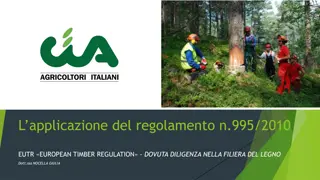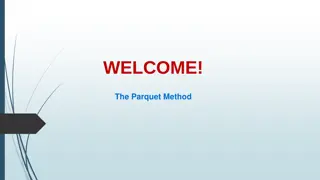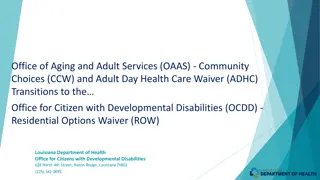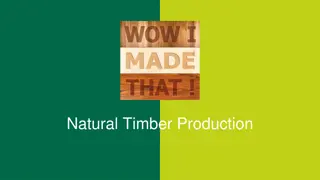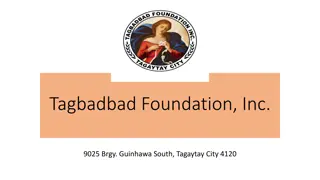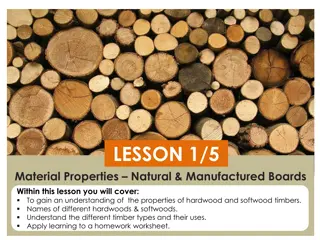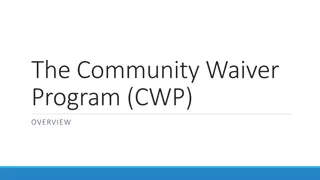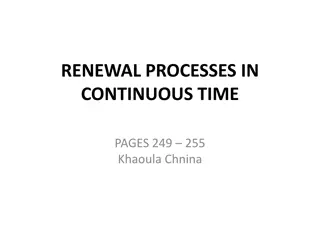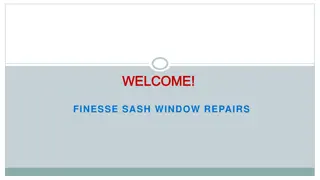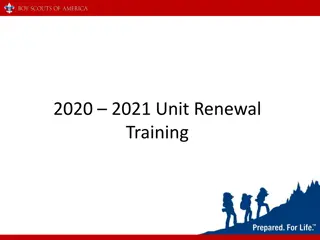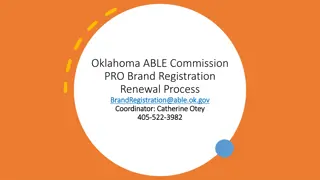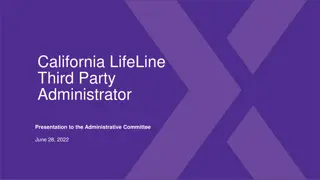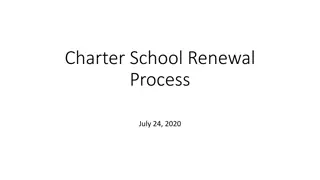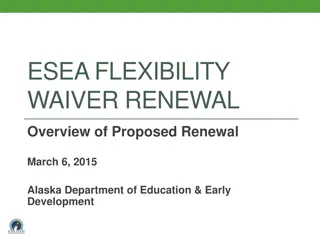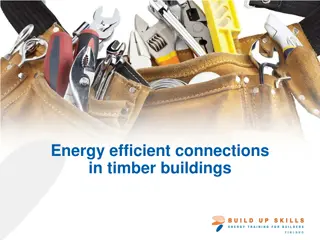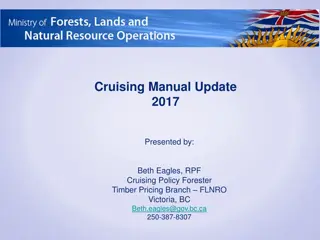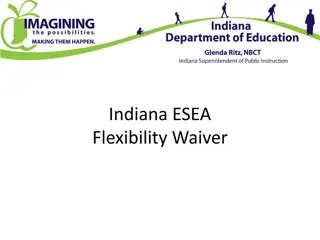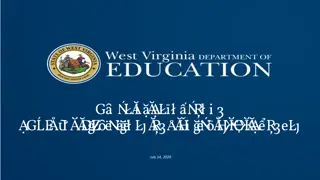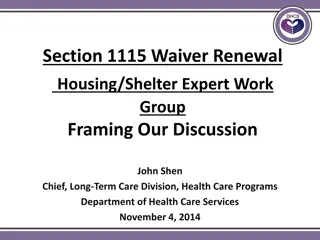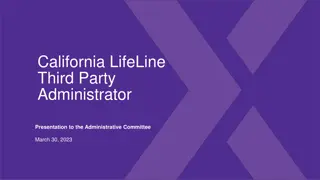Timber Waiver Renewal Process Overview
Discover the detailed chronology and key components of the Timber Waiver renewal process in the Lahontan region. Stakeholder engagement, proposed improvements, and outreach efforts are outlined, focusing on operable soil conditions, slash piling, burning practices, and monitoring program consistency. Learn about the proposed enhancements and stakeholder engagement sessions planned for the upcoming review periods.
Download Presentation

Please find below an Image/Link to download the presentation.
The content on the website is provided AS IS for your information and personal use only. It may not be sold, licensed, or shared on other websites without obtaining consent from the author. Download presentation by click this link. If you encounter any issues during the download, it is possible that the publisher has removed the file from their server.
E N D
Presentation Transcript
Item 11 Lahontan Region 2014 Timber Waiver April 10, 2014 Douglas Cushman P.E. Nonpoint Source Unit Chief 1
Lahontan Timber Waiver Renewal Presentation Outline 1. TW Renewal Process Chronology 2. 2014 TW improvements 3. 2014 TW Application and form example 4. Staff Recommendation To Water Board 2
November 2013 Board Meeting Informational Item Stakeholder engagement Key Issues to address in TW renewal Operable soil conditions for equipment use Slash piling and burning in sensitive areas Basin Plan prohibition exemptions Consistent approach to MRP Updated forms 3
Timber Waiver Renewal Stakeholder Outreach by Staff Four Listening Sessions in Lake Tahoe, Susanville, and Bishop in December and January Tentative review January 24--February 24 Proposed review March 14-28 Continued engagement during April 4
Proposed Improvements to the Timber Waiver 1. Operable Soil Conditions off roads 2. Slash Piling and Burning in Lake Tahoe Stream Environment Zones (SEZs) and Basin Plan Prohibition 3. Monitoring and Reporting Program consistency 4. Application and Monitoring Form revisions 5
1. Operable Soil Conditions 2009 Waiver 2014 Waiver No significant rutting Soil Testing Outcome based Prescriptive 6
2. Slash Piling and Burning in SEZs Current Waiver Pile Size Proposed Waiver Burn scar vegetative recovery BP prohibition granted with Waiver adoption BP prohibition exemption needed for each project Outcome based Prescriptive 7
SEZ/WBBZ Burn Scar Performance Measures Option 1 Rake native duff or organic mulch post burning Option 2 Monitor vegetative recovery by end of 2nd growing season Report on vegetative recovery If not re-vegetated rake native duff or organic mulch Submit report 8
3. Monitoring and Reporting Program Efficiency All enrollees required to use Board adopted forms. Timber Waiver monitoring forms were revised to best address Water Board and project implementer needs 9
Timber Waiver Application and MRP Forms Added sections to address SEZ/WBBZ slash piling and burning Forms will be designed for electronic submission 10
Stakeholder concerns Inadequate water quality protections Options for burn scar amelioration Invasive species Additional monitoring and reporting 11
TW Category 6 Application Form Slash Pile Section Example 8.f. Please provide a description of fire operations in SEZ and WBBZ areas including: i. Methods of treatment Hand cutting and piling, pile burning ii. Approximate acreage of SEZ/WBBZ treatment area within the Project boundary20 acres iii. Approximate percent of SEZ/WBBZ treatment area to be covered in piles (circle one): 0- 10% 10-20% 20-30% iv. Anticipated Option to be employed per Attachment Q, Item d. (circle one): Option 1 Option 2 v. If using Option 2 (Attachment Q, Item d), provide methods or criteria (qualitative or quantitative) for determining vegetative recovery of burn scars as compared to pre- treatment conditions. Vegetation recovery will be documented using a rapid qualitative assessment form developed by our agency, during peak growing seasons (July-August). This form will document the types and relative abundance of non-bare ground cover (e.g. shrub understory with sparse grasses and forbs) within the project prior to burning as well as in the second year after the burn. We will document type and relative abundance of non-bare ground cover, including presence of invasive plant species, within a representative sample of burn scars within the project vi. Identify treatment areas (e.g. Units) where greater than 40% percent of material in piles is expected to exceed 9 diameter at the time the piles are built. Unit 3 vii. Anticipated schedule for burn pile placement and burningplacement in Fall 2014, up to two years to cure and burning in Fall/Winter 2017, ground and weather conditions permitting viii. Water quality related design features or mitigation measures to protect SEZ/WBBZ other than those required in Attachment Q pile size will be limited to 15 foot diameter 12
Questions/Comments? Douglas Cushman dcushman@waterboards.ca.gov (530) 542-5417 13
2014 Timber Waiver Staff recommends the Board adopt the Proposed Timber Waiver with late revisions. 14


